"The student"
We are no longer building saddle trees, but we have two videos about how Western saddles fit horses available on our westernsaddlefit.com website.
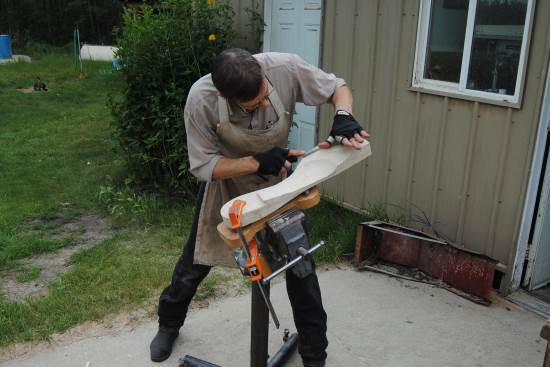
The last couple weeks of July we hosted Vern Rempel of VR Saddlery as we taught him how to build trees for his own saddles. Vern has been a long-time customer, having ordered the third tree Rod ever sold, and a longer term friend. He finally decided that he wanted to build his own trees. Any saddle maker we have talked with who builds his own trees has told us that it isn’t for financial reasons. The cost of equipment, setting up a tree shop and education, the learning curve needed, the time it takes to build a tree when you don’t build lots of them – all of these mean that even in the long run it is more economic to purchase trees than build your own.
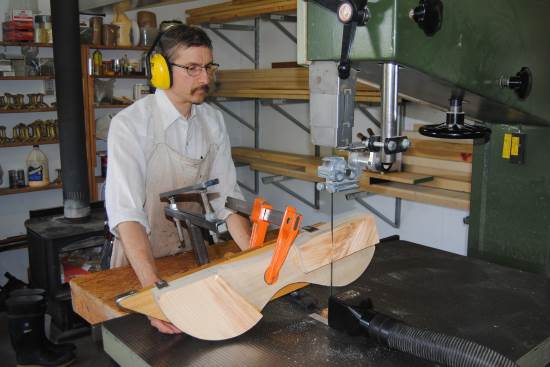
But there are other reasons to build your own trees than economics. Learning to build trees helps a saddle maker understand more about how trees work to fit riders and horses, an understanding that is hard to get unless you’ve built them. Being able to fine tune the shaping to exactly what you envision is another reason to build your own. Then there are the practicalities of getting a tree at the time you need it. And some people really enjoy building the entire saddle from the foundation up, knowing that it is all their workmanship. That satisfaction can be worth a lot.
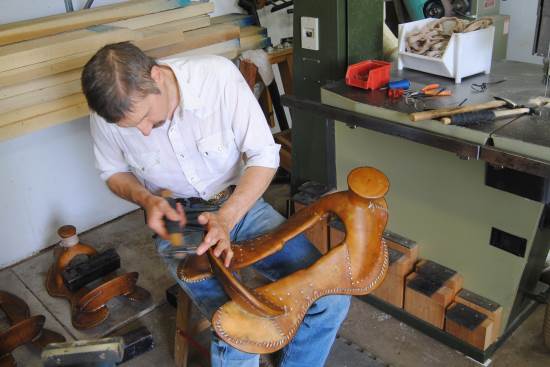
Our course is set up as a (very) intensive two, six-day week course. The goal is for the student to build and rawhide two trees during that time, but whether that happens depends on the time and effort the student puts in, their previous experience in the skills used in building trees, and their own choices. (A previous student only rawhided one tree as he decided to leave one in the wood for a future reference.) Vern got them both done in good time but he worked a lot of evenings, which we all expected. (That’s not to say we didn’t have fun with “the student” while he was here. We all laughed a lot!)
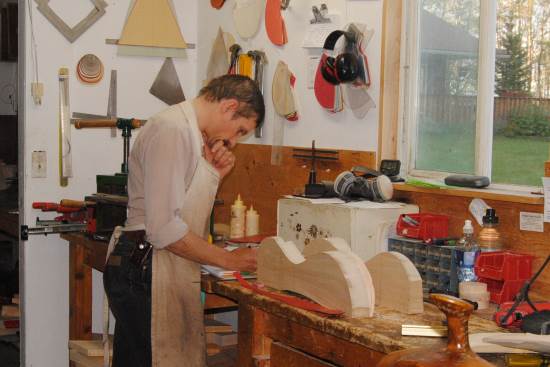
Our goal with our tree making course is to give the student all the information they need to be able to go out and build a good quality Western saddle tree of any basic style, and have a good introduction to the manual skills needed to accomplish this well. We also want them to have a solid understanding of how to make changes to fork or cantle types or shapes or angles and still get them to fit properly on the bars. And it is imperative that they have a solid grasp on how to vary all the factors that affect tree fit for the horse, whether that is how they integrate those factors into their initial layout of the entire tree or how they mark out and shape the bars. This is important so they can fit different body types of horses the way they choose in the future. Getting this all figured out takes deep thought…
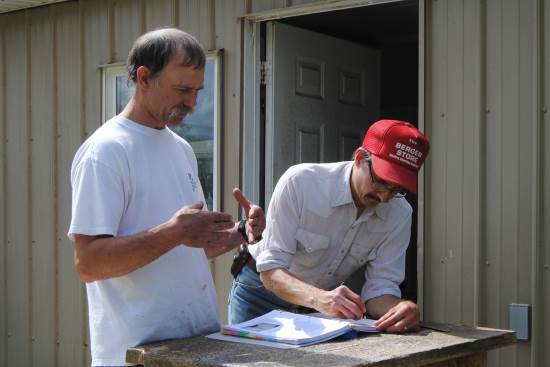
We have put together full instructions, including all our charts and diagrams, in a binder that becomes their best friend while they are here. This means they don’t have to take all their own notes and scramble to try to record information when they could be watching and doing, though they are welcome to write what they will and take photos or videos as they wish.
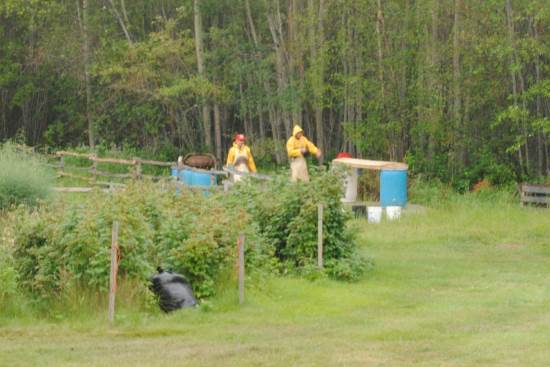
Somewhere early on Rod also teaches them to make rawhide. Now that Tejas has stopped selling wet or frozen rawhide, it is harder and more expensive to purchase, and making your own rawhide hide is a lot more attractive than it used to be (though describing making rawhide as being attractive is pushing things – a lot…) I was slow in taking the pictures, from the nice dry deck in front of the house, as Rod had Vern out in the rain fleshing a hide. They were just finishing up here. No, we weren’t trying to be mean to the poor student, but it fit best into the schedule that day and the weather didn’t cooperate. (And hey, it wasn’t snowing that day like it was for a previous student!) Besides, it wasn’t raining when they started - honest!
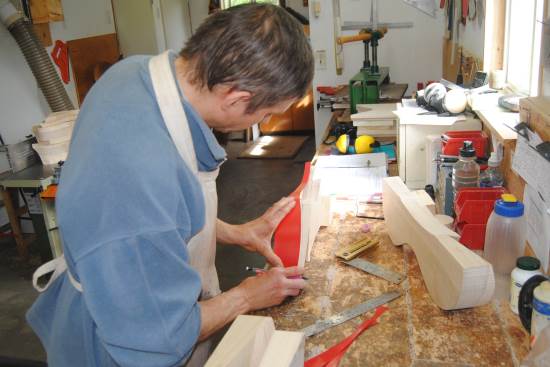
Then there is all the initial marking out of the pieces, cutting them out and learning to mark out the bar edges – a critical component in building a good tree. This is all the “technical stuff” that uses charts and figures and angles – and strains the brain the first few times, at least... It isn’t just slapping a pattern on a piece of wood and tracing around it. At this point we’re about 2 ½ days into the course.
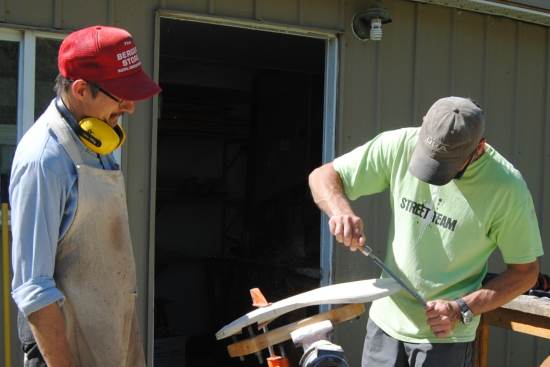
The way we teach in all of this is to initially demonstrate what we do, explaining as we go, and then help them as needed as they work on their trees. Rod is not always watching over their shoulder, but he’s keeping an eye on them to give hints and suggestions as needed, and is always available to answer questions or check on their work when asked. In planning what they are going to build, we suggest they try for as many variations as possible, just for the experience. So we recommend they make one swell fork and one slick fork, make one a wood post horn and one a metal horn, make one cantle a regular and the other a Taylor and vary the fits for the horse if it works for them to do that as well. They start out by watching…
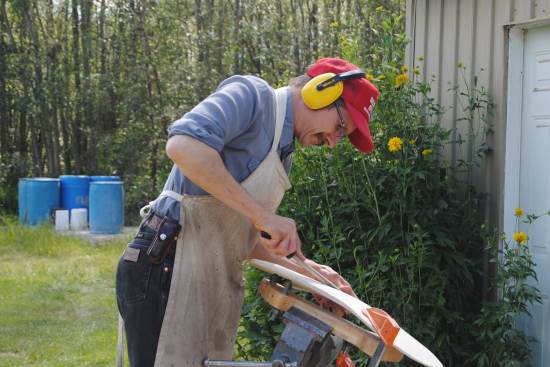
And then they get to work! Here Vern is working on the bottom of a bar, getting the shaping just right. (No, rasping isn’t loud enough to need to wear hearing protection. Rod was working with a grinder on another bar set up close to him.)
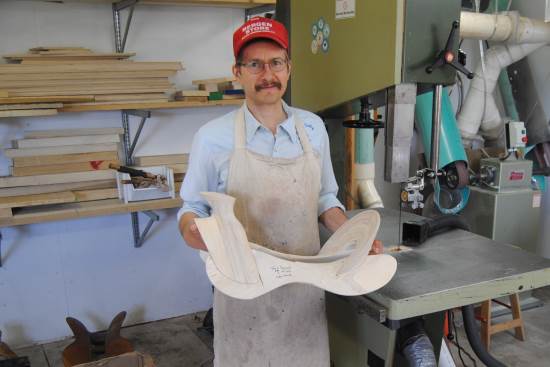
And by Saturday of the first week, both students we taught this past year had finished their first tree in the wood. (Not sure if the smile is happiness or just sheer relief…)
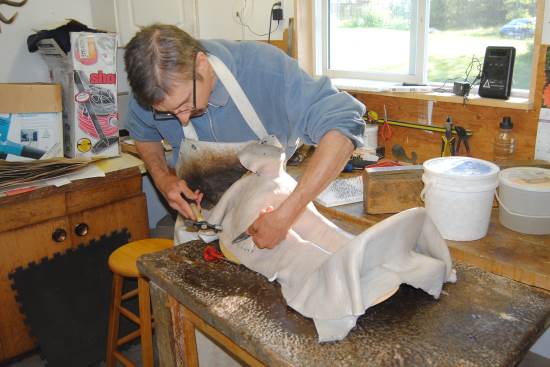
Next up is rawhiding. Now, watching someone rawhide a tree may be analogous, for some people, to watching paint dry, but for our students, it is actually interesting (hopefully, anyway...) It only takes about four hours for Rod to rawhide a saddle tree now, so they watch for half a day. Doing their own, however, takes a bit longer…
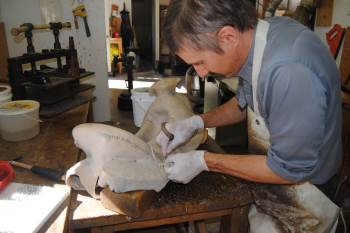 |
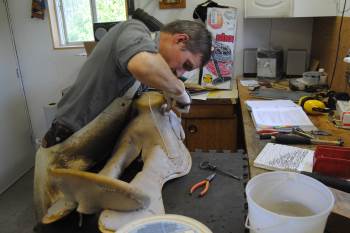 |
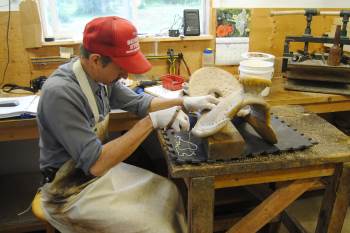 |
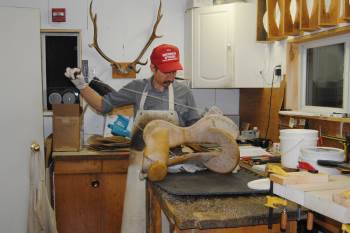 |
We know that the first tree takes people anywhere from 10 (rarely) to 14 to 18 hours to rawhide. Vern started at or before 8 am. He finished sometime around midnight. (We told you the course was intensive!)
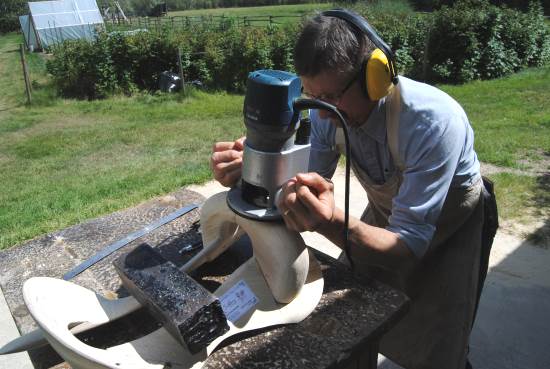
Then it was back to working on the second tree
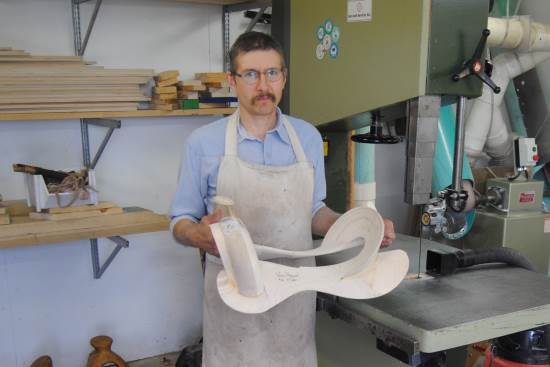
which Vern finished on the Wednesday and rawhided on Friday. (You need time for three coats of varnish in between.) Rawhiding the second one didn’t take nearly as long.
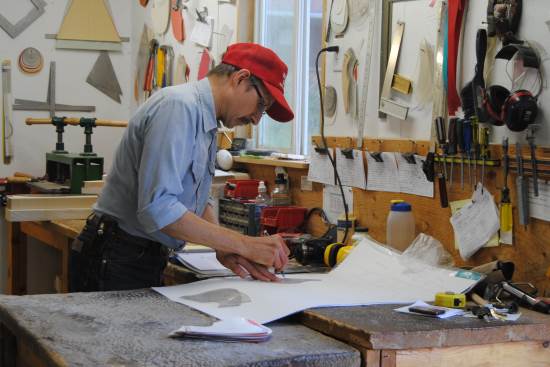
Along with the written instructions and charts, we give the right to all our patterns (with the exception of a few that other people have specifically given to us). Along with the outline shapes for all the forks, cantles and bars, there are also numerous templates used in making all the pieces, plus a few for marking out the wood pieces prior to laminating. Copying patterns takes up a fair amount of time, especially in the evenings.
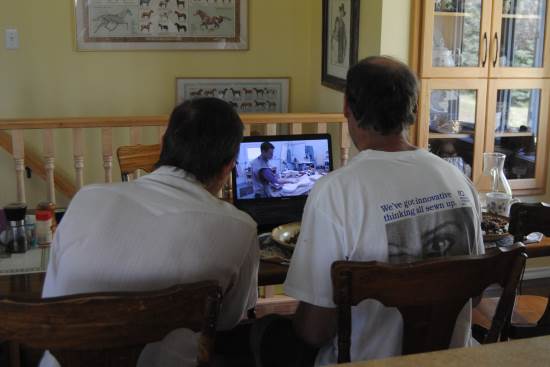
Not even meal times were exempt from teaching and learning. Room and board is included in the cost of the course if the student wants it, and we spent a lot of our meals watching videos. There are few interesting videos from different tree makers of varying types which we watched so we could compare techniques and ways of building trees. (Every tree maker does it differently, you know!) And then there are many videos on “saddle fit” – some good, some not so good… They all gave us a jumping off point for discussing pros and cons, what we like and don’t like and why. We had some really good conversations. (And yeah, the equine posters on the wall with the anatomy diagrams were consulted a few times as well.)
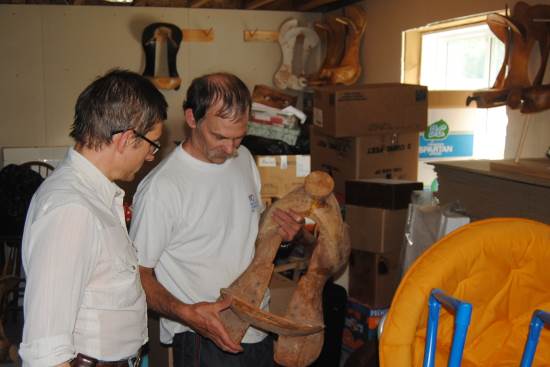
We also spent time going over the trees from our “wall of fame and shame” in the basement. These are a few of the trees we have duplicated over the years for either breakage or poor fit. There is quite the range of styles, ages and qualities in these trees and again, examining them led to good discussions about building methods as well as fit.
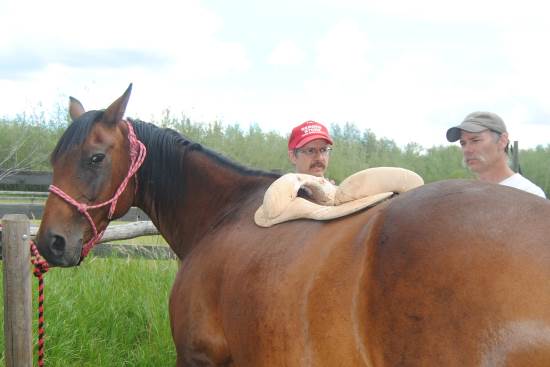
Then it was out to the horses to try on trees and see what we liked and didn’t like and why. Here is where Vern’s experience as a saddle maker came into play. We have had lots of conversations over the years about trees and saddles and fit, so this part wasn’t as extensive as it would have been for someone with less experience. However, every time we put a tree on a horse we can learn something if we look, so again, it was time well spent. (Though it looks like Wilma doesn’t agree…)
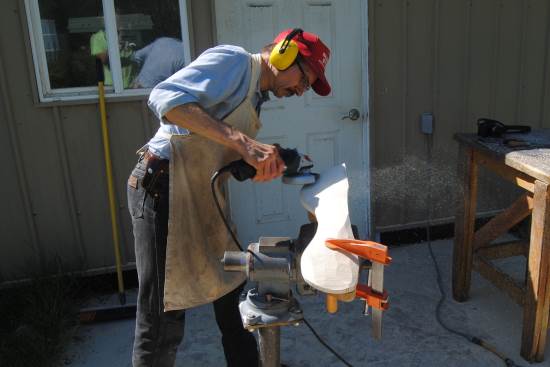
We talk about all sorts of variations and special requests on trees and have instructions in our manual about them, but something Vern especially wanted to learn was how to build a pack tree, so he and Rod built one while he was here. We work to accommodate special interests like this if we can.
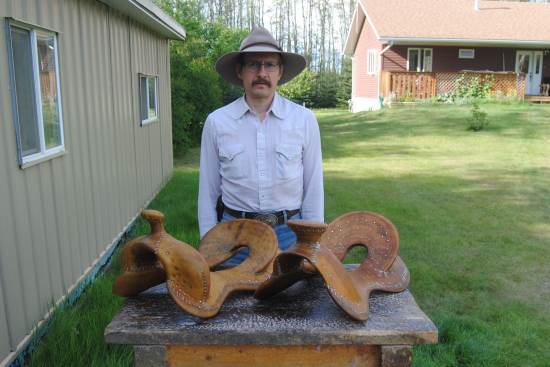
Overall, we were pleased with the way things went. Vern said that by the end it wasn’t as overwhelming as he had felt it was in the middle of it, though he was very tired. He definitely put in the hours and the work to get the most out of the course, and we all were pleased with the trees he built. He said he feels like he can now go out and build his own trees with confidence, though he has our phone number and the option of calling to ask advice or questions as he needs to as. And, being as they live relatively close, I’m sure there will be visiting and looking at trees and discussions that way, which we can do via e-mail and pictures with those who live farther away also. This follow up is always part of the deal when we teach people to build trees.
The world needs more good tree makers!
